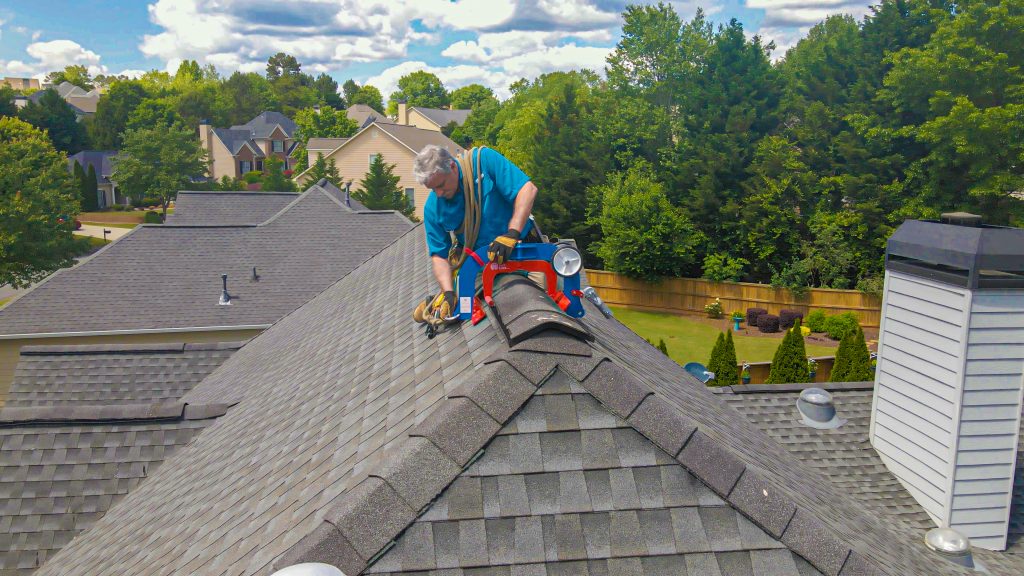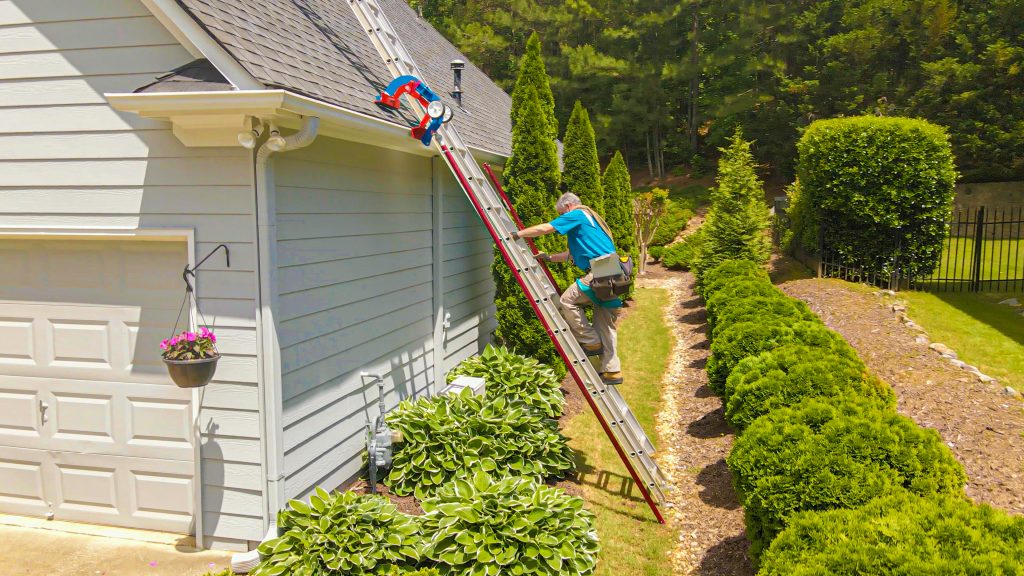
Did you know that the primary cause of fall fatalities on construction sites is from falling off a roof? According to OSHA, 5,333 workers died on the job in 2019, with the primary cause of death stemming from construction and lack of fall protection.
Anything on a construction site that could cause a worker to fall or lose their balance would be considered a fall hazard. Having the proper roofing tools, safety equipment, training and fall prevention systems in place can greatly reduce the risk of these accidents.
What Safety Equipment Do Roofers Need?
There are several types of fall protection gear and tools that should be used when you’re working on a roof, whether you’re a commercial roofing contractor, professional roofer, or if you’re working on your own home.
PPE: Personal Protective Equipment
Anytime you’re working from a great height, you want to ensure you’re using basic safety PPE. This would include:
- Hard hats: Ensure you always purchase an OSHA approved hard hat
- Safety glasses: Protect your eyes from debris and blinding sunlight or glares.
- Ear plugs and/or muffs: Protect your eardrums from loud noises, such as hammering or machinery.
- Heavy-duty gloves: These will both protect your hands from cuts and ensure you keep a firm grip while climbing a ladder or when holding tools.
- Respirators and/or Face masks: Wearing a covering over your mouth can help ensure you don’t breathe in anything hazardous, such as air pollutants while using mechanical tools.
Appropriate Attire for Roofing & Construction
If you’re going to be working on a roof, you need to dress for the occasion. Wearing the right clothes can prevent accidents and help save lives, which is one of the reasons that a roofing foreman has the right to send a worker home if they show up to a job site without the proper attire.
When getting dressed for the day, be sure to clothe yourself with the following:
- Steel-toed boots: These will not only help you to prevent any damage from occurring on the new roof, but they’ll help you to keep your traction and footing all day long. They should also be comfortable, relatively lightweight and provide excellent ankle support to maximize flexibility.
- Long-sleeve shirts: These provide added protection to your arms against potential scrapes and bruising.
- Safety vest: These are especially important for roofers and required by law for construction workers. It allows the wearer to be readily seen and alerts others around them to their presence.
- Long, thick pants: Roofing is a hard job that requires tough work pants. They should be sturdy and built to last, while also comfortable, flexible and breathable.
- Knee pads: These give your needs extra protection when kneeling, bending or squatting on roof surfaces.
Basic Roofing Tools
If you’re a professional roofer, then you know that you need some necessary roofing supplies and tools in order to get the job done. Ensuring you have the following checked off your list will help make each job go smoothly:
High-quality Ladder: This might go without saying, but having a durable, safe and reliable ladder is the number one box a roofer needs to check off. It should be about 30-40 feet, lightweight and sturdy enough to hold 350+ lbs. This is not an area where you’d want to skimp. It’s worth it to spend a little extra money on a ladder that is high-quality and from a reliable brand. Remember that using an inferior ladder can lead to injury, accidents and lawsuits. So make a wise decision in the ladder you use for all your roofing projects.

Cordless Drill: You never know what you’ll need a drill for, and it’s a staple for any construction job, especially roofers that might need to install fasteners.
Roof Shovel: A roofing shovel, roof rake, or any kind of roofing removal tool, should accompany every roofer. They help clear excess snow or leaves from the top of a home, and they are a must when removing old shingles.
Standard Toolbox: Anytime you’re performing a job that require construction, you’ll want to bring along your handy toolbox, complete with screwdrivers, hammers, mallets, wrenches, coring tools, utility knives, nails, screws, and more.
Wheelbarrows: If you’re working on a large roofing job, then chances are you are going to be hauling old shingles, wood, debris and more to the dumpster. A wheelbarrow is a life-saver and will save you from making more trips than necessary.
Fall Prevention & Protection Systems
Roof fall protection and prevention is a crucial part of any roofing project. It should be the centerpiece of your safety procedures. This is where HippLock comes in. We have a revolutionary roof safety device for both gable and hip roofs that doesn’t require any rope setup. HippLock is easy to set up, lightweight and OSHA compliant. Every roofing professional should have this life-saving fall-preventing device.
How to Install Hipplock:
1) Visually inspect the home and roof
2) Determine the slope of the roof
3) Install extension poles & connect the lifeline
4) Hang the HippLock from the gutter or ladder
5) Install the HippLock using the push pole system
Follow the base package assembly instructions for more information, or watch this instructional video on how to use HippLock properly.
Questions? Contact Us Today!
If you want to know more about this roof safety equipment, get in touch with our team through our website!